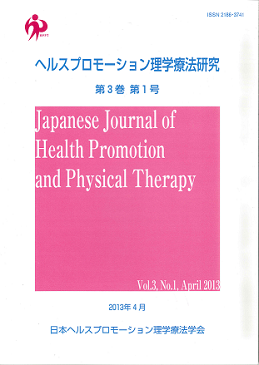Volume 3, Issue 1
Displaying 1-7 of 7 articles from this issue
- |<
- <
- 1
- >
- >|
ORIGINAL ARTICLES
-
2013Volume 3Issue 1 Pages 1-4
Published: 2013
Released on J-STAGE: September 12, 2013
Download PDF (415K) -
2013Volume 3Issue 1 Pages 5-9
Published: 2013
Released on J-STAGE: September 12, 2013
Download PDF (313K) -
2013Volume 3Issue 1 Pages 11-14
Published: 2013
Released on J-STAGE: September 12, 2013
Download PDF (416K) -
2013Volume 3Issue 1 Pages 15-19
Published: 2013
Released on J-STAGE: September 12, 2013
Download PDF (360K) -
2013Volume 3Issue 1 Pages 21-23
Published: 2013
Released on J-STAGE: September 12, 2013
Download PDF (291K)
SHORT REPORT
-
2013Volume 3Issue 1 Pages 25-28
Published: 2013
Released on J-STAGE: September 12, 2013
Download PDF (276K)
FIELD REPORT
-
2013Volume 3Issue 1 Pages 29-36
Published: 2013
Released on J-STAGE: September 12, 2013
Download PDF (574K)
- |<
- <
- 1
- >
- >|
